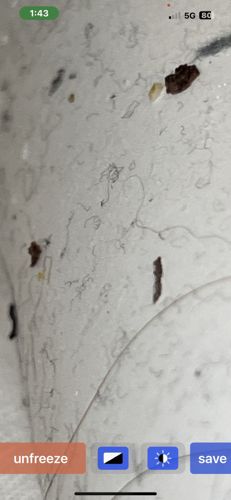Carpet Beetle Larvae (likely varied or black carpet beetle)
Scientific Name: Likely Dermestes lardarius (Larder Beetle), Attagenus unicolor (Black Carpet Beetle), or Anthrenus verbasci (Varied Carpet Beetle) larvae.
Order & Family: Order: Coleoptera, Family: Dermestidae
Size: Larvae typically range from 2 mm to 5 mm in length, depending on the species and developmental stage. They are often segmented with visible bristles or hairs.

Natural Habitat
Indoor environments, particularly in areas where dust and lint accumulate. These include carpets, rugs, upholstered furniture, clothing in closets, museum collections, attics, and even ventilation systems. They prefer dry, dark, and undisturbed places.
Diet & Feeding
The primary diet of carpet beetle larvae includes animal products and natural fibers. This includes wool, silk, hair, fur, feathers, museum specimens, dried food products, and even lint and dust accumulated from these materials. They are scavengers.
Behavior Patterns
Larvae are often found in dark, undisturbed areas, such as under furniture, in cracks, or in HVAC ducts. They prefer areas with accumulated dust, hair, and fabric fibers. Larvae move slowly and will often curl up or play dead when disturbed. Adults are winged and can fly, but they are generally weak fliers and are attracted to light.
Risks & Benefits
Risks: Carpet beetles are considered household pests. Their larvae can cause significant damage to natural fiber products such as wool carpets, clothing, furs, and stored food items. Some people may also experience skin irritation or allergic reactions from contact with their bristles or frass. They can contaminate food supplies. Benefits: In nature, dermestid beetles in general play a role as scavengers, breaking down organic matter. However, their presence indoors is almost always considered detrimental.
Identified on: 9/2/2025